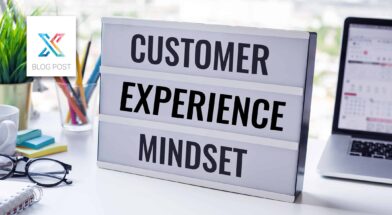What would you say if I told you it is possible to:
- Reduce the number of client relationships each of your project managers must manage,
- Increase individual project profitability and overall revenue growth,
- Provide your clients with a better experience working with your firm, and
- Reduce the risk of key talent burnout (or worse)
And, oh by the way, I’m not suggesting you do a large-scale hiring of new project managers either!
It is possible.
When I had this conversation recently with a prospective client, I decided it was time to share some strategies we’ve seen work to accomplish this goal. Let me share a case study of a firm we’ve been working with for the past ten years. Here’s the strategy in a nutshell:
Focus your efforts on a small group of strategic clients.
When the firm realized they were working their Project Managers extremely thin, with each manager owning 40-50 relationships of varying size, they realized both their team and their clients were at risk.
After they identified and better understood the situation they felt needed to change, we collaborated with them to create a plan to remedy that challenge.
Here are the steps they took:
Step 1: Do they like us? How do we know?
By implementing a feedback loop with their clients, the firm identified what they do best, according to their clients. They quickly saw their team strengths and the clients that most valued what the firm offered.
Using their client’s Net Promoter Score, they identified the likelihood of that client wanting to do more work with them. Combining this information with the feedback they received from their clients gave them quantifiable insight into clients that might be viewed as strategic clients with the potential to grow revenue.
Step 2: Identify stable, profitable clients
Having clients that are strong promoters is good provided your firm makes positive and consistent profitability on the projects you work on with them. By identifying the clients with a positive perception of their firm and measuring that perception against profitability, the firm could make strategic business decisions about whom to engage in strategic, profitable, relationships. Those clients that loved the work the firm was doing but that were not consistently profitable were re-evaluated for an increase in fees. Download an article by Mike Phillips, AIA, IIDA titled Firm Metrics + Client Metrics = Best Success here.
Step 3: Keep their strategic clients satisfied without giving away the farm.
Clients don’t always appreciate the little extras we give them on projects. Sometimes that gold speckled toilet seat is just a bit of an excess. And, often that excess comes out of your profits. One of the advantages to Step 2 is the ability to look at real data comparing perception and profitability. In all the years of data we’ve collected, we’ve seen a lot of project managers giving away those gold speckled toilet seats while losing money on projects (and they are burning out their team by trying to work long hours to minimize the impact to profitability). By creating a consistent understanding of client expectations, they were in a great position to sustain and build on their relationships.
Step 4: Measure how their employees responding
Helping the employees understand the reasons the business model was changing wasn’t easy. It started with some honest conversation and by using an internal 360 evaluation. The leaders learned some important information from this effort. It turned out that many employees felt they were stuck within one narrow area of the firm’s work. They wanted the chance to work on other projects but were so busy getting work done and trying to win new work, they didn’t have the opportunity to learn and grow. There was also a feeling they could not approach some of the firm leaders for help on projects. And, because they were so overwhelmed themselves, they felt apprehension in referring friends to join the firm. With that feedback the Leaders acted.
The Results
The decision to identify key clients and seek to do more work for fewer “key” clients was an important decision. The firm took the time (almost a year) to culminate data and interview clients. When they were done, they had culled down a list of strategic accounts they wanted to retain, grow, and build partnerships with. The firm re-aligned their office structure, removed silos and created a more collaborative environment. They continued to implement a project-based client listening program, focused on identifying challenges early, and aligning expectations between the client and the firm.
Was it easy? No. It took a lot of firm-introspection. Their leader was a visionary. And his vision for the firm has paid off. With a smaller, strategic client group their firm has increased profit margins to 30%, they have increased their proposal win rate to 60%, and have reduced staff attrition by 40%. They have ecstatic clients, employees, and shareholders.
Discover how Client Savvy can assist your firm in its effort to quantify what your clients say you do best, to identify stable (and profitable) clients using integrated metrics, and to create raving fans without giving away the farm. Schedule a call with one of our experts at 1.866.433.7322.





